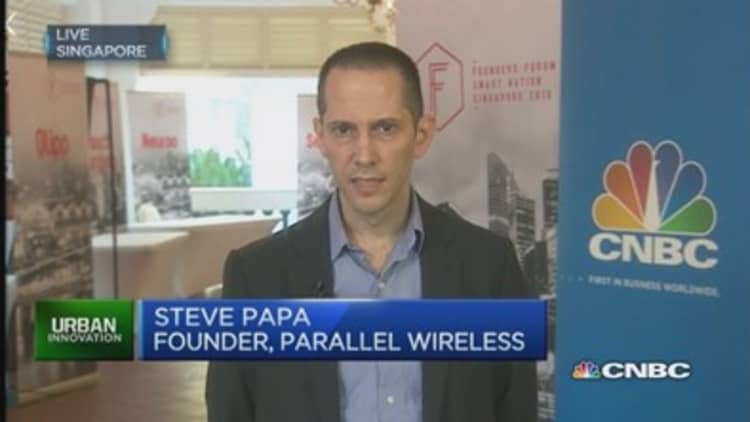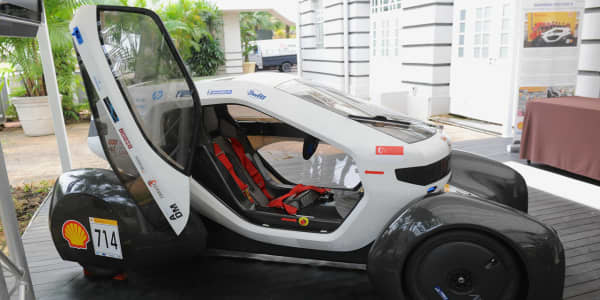
Advances in wireless technology could see cell towers become a thing of the past, according to telecommunications experts.
"There's no reason why your cellphone isn't the cell tower of the future," Steve Papa, founder of Parallel Wireless, told CNBC on Tuesday.
Speaking on the sidelines of the Founders Forum Smart Nation Singapore conference, Papa envisions a world where cities will be free of massive cell towers. Instead, mobile phones will be become part of the transmission network, resulting in a decrease in dropped calls, less interference and a fewer "black spots" – areas with patchy signals.
Read MoreComing soon: Cars that talk to each other
"We're just on the cusp of chips coming out where a $300 chip can power an entire cell tower. When you get that far, it's not that much further to a scenario where when you're finished with your cellphone, you can hang it on the wall and it adds to the cellular network," Papa said.
Major players
Qualcomm is already experimenting with technology that allows smartphones to communicate with other mobile devices up to a range of 500 meters, bypassing cell towers altogether. Called LTE Direct, it uses licensed spectrum without draining a phone's battery life and will become commercially available in 2016, Qualcomm said.
The firm conducted a trial of the device-to-device (D2D) software in collaboration with Deutsche Telekom and Huawei earlier this year. In a white paper released in February, Qualcomm said LTE Direct can offer mobile operators "tremendous value for their licensed spectrum assets with minimal impact on resource consumption."
Facebook also expressed interest in the technology. Jay Parikh, the company's vice president of infrastructure engineering, was quoted last year as saying that LTE Direct can enable Facebook to "facilitate user experiences around serendipitous interactions with a local business or a friend nearby."
Research suggests the technology's disruptive potential is massive.
"D2D-enabled LTE devices have the potential to become competitive for fallback public safety networks that must function when cellular networks are not available or fail," said the Wireless Networking & Communications Group (WNCG) in a paper last year.
"In principle, exploiting direct communication between nearby mobile devices will improve spectrum utilization, overall throughput, and energy efficiency."
The importance of spectrum
Additional spectrum is needed to make this vision of wireless technology a reality, Papa said.
Recent developments in the U.S. point to a bright future for the industry. Last Friday, the U.S. Federal Communications Commission (FCC) approved a landmark plan that allows broadband providers to use and share spectrum that was previously held by the military.
"Since they don't make spectrum anymore, and since spectrum is the pathway of the 21st century, we have to figure out how we're going to live with a fixed amount," FCC Chairman Tom Wheeler said.
Papa believes this plan – called the Citizens Broadband Radio Service– will open an enormous playground for entrepreneurs across the globe and augment cellular networks.
Moreover, increased spectrum will mean no one company will dominate device-to-device technology, Papa noted.
"Who's going to be in charge is more of a political question than a technology or industry structure question. The reality is that technology will make spectrum less scarce. When spectrum is less scarce, there's less of a need for a natural monopoly."




